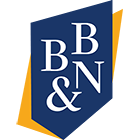Does this sound familiar? You have owned stocks, mutual funds, or investment real estate for many years. The value has appreciated substantially, but if you sell now a significant portion of your profit will be lost to taxes. You now want a source of dependable income without the time, effort, and complexity of managing your investments. And if you could accomplish those goals and support Buckingham Browne & Nichols School, that would be all that you could hope for. Consider achieving all of your objectives with a gift to a Charitable Remainder Unitrust that will ultimately benefit BB&N.
MAKE A GIFT TO Buckingham Browne & Nichols School THAT HELPS US – AND YOU!

A Charitable Remainder Unitrust will likely help you achieve your goals. The trust is tax-exempt, so all investment transactions within the trust are free from taxes. Also, no taxes are due, when you transfer appreciated assets into the trust. You will receive a generous income tax charitable deduction for a portion of the value of the assets you transfer. You name the individuals who will receive income from the trust, typically you, your spouse, or other loved ones. Payments can last for life or for up to 20 years. You also name the charities who will receive any remaining assets when the trust terminates. In many cases, you will receive more income than you are currently getting from your investments.
- A trust agreement is prepared that meets IRS requirements for the trust to be tax-exempt.
- The trust agreement names a trustee to administer the trust. You can be the trustee, but it is customarily a bank or investment brokerage company.
- You name the individuals to receive income from the trust and the charities to receive the remaining assets when the trust terminates.
- You and the trustee sign the trust agreement.
- The trust agreement contains a pay-out rate to calculate distributions, typically in the 5% to 6% range.
- You transfer appreciated assets to the trust and receive an income tax charitable deduction for a portion of the value of the assets you contribute. You can make additional contributions to your trust at later dates, if you wish.
- In most cases, the trustee sells the assets and no capital gains taxes are due on the sale.
- The trustee invests the proceeds from the sale to enable the trust to meet income and charitable objectives.
- The trust assets are valued annually and multiplied by the pay-out rate to determine how much the trust will distribute that year. Payments may increase or decrease annually.
- Anyone receiving annual income will receive tax reporting statements each year.
- The trust terminates when all who are receiving income from the trust pass away. Any remaining trust assets will be used by Buckingham Browne & Nichols School to further our work.
- The trustee will handle all investment and trust administrative responsibilities.
- You and/or others you have named will receive income from the trust, typically for life.
- You will have substantial tax savings.
- Ultimately, Buckingham Browne & Nichols School will benefit from your generosity.